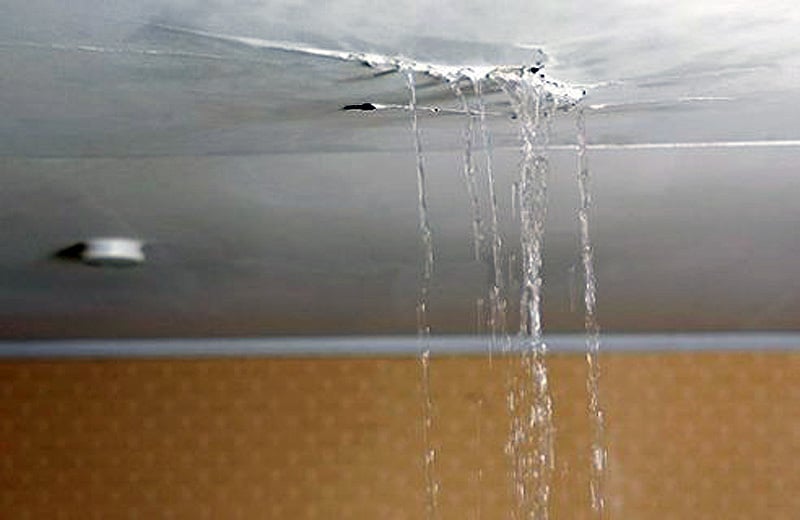Pinpoint A Half-Dozen of The Commonest Triggers for Leakage in Your Residence
Pinpoint A Half-Dozen of The Commonest Triggers for Leakage in Your Residence
Blog Article
What're your opinions on Common Water Leaks In House?

Leakages not only trigger waste of water yet can also trigger unnecessary damages to your house and promote undesirable organic development. Water leaks might go unnoticed considering that most of the pipework in our home is concealed. By recognizing and looking for everyday circumstances that trigger leaks, you can protect your house from future leaks and also unnecessary damage. Today, we will take a look at 6 leakage causes that may be triggering your pipelines to trickle.
Intruding roots
The majority of water leakages begin outside your home instead of inside it. If you see an abrupt reduction in water pressure, say in your faucet, take time to head out and also analyze your lawn. You may see wet spots or sinkholes in your lawn, which may indicate that tree origins are invading water lines creating water to leak out. You can have your plumber look for intrusion, especially if you have trees or shrubs near your property.
Rusty water systems
As time passes by, your plumbing system ages and corrosion such as rust may start gnawing the pipes. This could be the cause of staining or warping on your pipes. This calls for an inspection with your plumber instantly. Consider replacing the pipelines because they are at a higher threat of corrosion than the newer designs if our plumbing system is old.
Malfunctioning Pipeline Joints
The factor at which your pipelines connect is regularly the weakest link in the waterline. Pipeline joints can degrade with time, resulting in water leaks. The majority of pipeline joints are not quickly noticeable. If you have loud pipelines that make ticking or banging noises, particularly when the warm water is activated, your pipeline joints are most likely under a lot of pressure. It is advisable to have your plumber evaluate your system once a year.
Instant temperature level adjustments.
Severe temperature changes in our pipes can trigger them to broaden as well as contract all of a sudden. This growth and contraction may trigger fractures in the pipes, especially if the temperature are below freezing. It would be best if you watched on how your plumbing functions. The visibility of the previously stated scenarios often indicates a high threat.
Poor Water Connectors
At times, a leakage can be triggered by loose tubes and pipelines that supply your devices. In situation of a water links leakage, you might discover water running directly from the supply line or pools around your appliances.
Obstructed Drains
Clogged drains might be frustrating and also inconveniencing, but they can in some cases wind up causing an overflow bring about break pipes. Keep removing any kind of materials that may decrease your drains that might obstruct them to stay clear of such troubles.
All the above are causes of leakages however not all water leakages arise from plumbing leaks; some leakages may originate from roof leakages. All leaks need to be fixed immediately to avoid water damage.
Leaks not just trigger waste of water but can likewise trigger unnecessary damage to your house and also advertise unwanted organic growth. By understanding and looking for everyday circumstances that trigger leaks, you can protect your residence from future leakages and also unneeded damages. Today, we will look at 6 leakage creates that may be creating your pipelines to drip.
At times, a leakage can be triggered by loose hose pipes and pipelines that supply your appliances. In instance of a water connections leakage, you might observe water running straight from the supply line or pools around your appliances.
How To Check For Water Leak In Your Home
How To Check for Leaks
The average household's leaks can account for nearly 10,000 gallons of water wasted every year and ten percent of homes have leaks that waste 90 gallons or more per day. Common types of leaks found in the home are worn toilet flappers, dripping faucets, and other leaking valves. These types of leaks are often easy to fix, requiring only a few tools and hardware that can pay for themselves in water savings. Fixing easily corrected household water leaks can save homeowners about 10 percent on their water bills.
To check for leaks in your home, you first need to determine whether you're wasting water and then identify the source of the leak. Here are some tips for finding leaks:
Take a look at your water usage during a colder month, such as January or February. If a family of four exceeds 12,000 gallons per month, there are serious leaks.
Check your water meter before and after a two-hour period when no water is being used. If the meter changes at all, you probably have a leak.
Identify toilet leaks by placing a drop of food coloring in the toilet tank. If any color shows up in the bowl after 10 minutes, you have a leak. (Be sure to flush immediately after the experiment to avoid staining the tank.)
Examine faucet gaskets and pipe fittings for any water on the outside of the pipe to check for surface leaks.
Undetected water leaks can happen without the home or business owner even realizing. If you suspect a water leak, but not able to find the source. It is time to contact a professional water leak detection service, The Leak Doctor.
How To Find a Water Leak In Your Home
https://www.leakdoctor.com/blog/How-To-Check-For-Water-Leak-In-Your-Home_AE197.html

I recently found that write up on Common Water Leaks In House while looking around the search engines. Enjoyed reading our write up? Please share it. Let others locate it. Thank you for your time. Visit again soon.
Best plumbers, one call away. Report this page